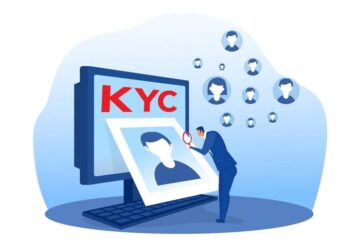In an age where customization and flexibility reign supreme, the concept of modular banking has emerged as a transformative approach to financial services. Modular banks offer tailored solutions that can be easily adapted to meet the unique needs of customers, making them an attractive option for entrepreneurs and businesses seeking to establish their own banking infrastructure. In this guide, we’ll explore the steps involved in building your own modular bank and unlocking the potential for innovation and scalability in the financial industry.
Services Offered by Modular Banks
Core Banking Functions:
Account Management: Modular banks provide robust account management functionalities, allowing customers to open, close, and manage their accounts seamlessly.
Payments: Customers can initiate and receive payments conveniently through various channels, including online banking portals and mobile applications.
Lending: Modular banks offer a suite of lending products, including personal loans, mortgages, and business loans, with streamlined application and approval processes.
Value-Added Services:
Financial Insights: Modular banks leverage data analytics and AI-driven algorithms to offer personalized financial insights and recommendations tailored to individual customer preferences and goals.
Budgeting Tools: Customers can access intuitive budgeting tools that help them track expenses, set financial goals, and manage their finances more effectively.
Investment Services: Modular banks provide investment options and wealth management solutions, allowing customers to diversify their portfolios and optimize their financial assets.
Benefits of Modular Banking
Customization and Flexibility:
Modular banking enables financial institutions to customize their services to meet the unique needs of their customers, fostering stronger customer relationships and loyalty. Banks can easily add or remove modules as needed, allowing for rapid deployment of new features and services in response to changing market demands.
Scalability and Agility:
Modular banks are inherently scalable, allowing financial institutions to expand their operations and reach new markets without significant infrastructure investments.
With modular architecture of core banking systems, banks can adapt quickly to regulatory changes, technological advancements, and evolving customer preferences, ensuring continued relevance and competitiveness in the market.
Enhanced Customer Experience:
By offering personalized services and intuitive interfaces, modular banks enhance the overall customer experience, driving customer satisfaction and retention.
Customers benefit from access to a diverse range of banking services and features, tailored to their individual needs and preferences.
Cost-Efficiency:
Modular banking systems are cost-effective, with lower implementation and maintenance costs compared to traditional monolithic systems.
Financial institutions can optimize their resources and investments, allocating funds to areas that drive the most value and innovation.
Steps to build your own modular bank
Define Your Objectives and Target Audience:
Before diving into the development process, it’s crucial to define your objectives and identify your target audience. Consider the specific market segment you aim to serve and the financial services they require. Conduct market research to gain insights into the needs and preferences of your target audience, allowing you to tailor your banking solutions accordingly.
Choose the Right Technology Stack:
Selecting the appropriate technology stack and right digital banking platform is essential for building a robust and scalable modular bank. Consider factors such as security, scalability, and interoperability when choosing your technology partners.
Explore modular banking platforms and APIs (Application Programming Interfaces) that offer the flexibility to integrate various banking modules seamlessly.
Design Your Banking Modules:
Modular banks are built on a modular architecture, allowing for the creation of customizable banking modules that can be mixed and matched to create tailored solutions.
Identify the core banking system modules required for your platform, such as account management, payments, lending, and risk management. Additionally, consider incorporating modules for value-added services such as budgeting tools and financial insights.
Focus on User Experience:
User experience is paramount in modular banking, as customers expect intuitive interfaces and seamless interactions across digital channels.
Invest in user-centric design principles to create engaging and user-friendly interfaces that prioritize ease of use and accessibility for customers.
Ensure Compliance and Security:
Compliance with regulatory requirements and adherence to security standards are non-negotiable aspects of building a modular bank.
Work closely with legal and compliance experts to ensure that your banking platform complies with relevant regulations, such as Know Your Customer (KYC) and Anti-Money Laundering (AML) laws. Implement robust security measures to protect customer data and prevent unauthorized access.
Test and Iterate:
Once your modular bank is developed, undergo rigorous testing to identify and address any bugs or performance issues. Solicit feedback from beta users and iterate on your platform based on their input, continuously refining and improving the user experience.
Launch and Scale:
After thorough testing and refinement, launch your modular bank to the market and begin acquiring customers. Leverage digital marketing strategies and partnerships to drive customer acquisition and scale your banking platform.
In conclusion, building your own modular bank offers unparalleled opportunities for customization, innovation, and scalability in the financial industry. By following these steps and leveraging the right technology partners, you can create a tailored banking experience that meets the evolving needs of customers and positions your bank for success in the digital age.
Stay in touch to get more updates & news on Gossips!




